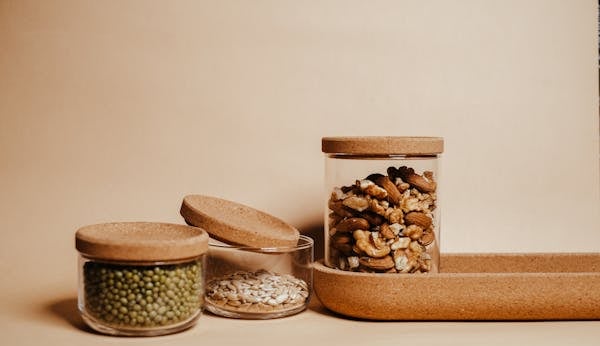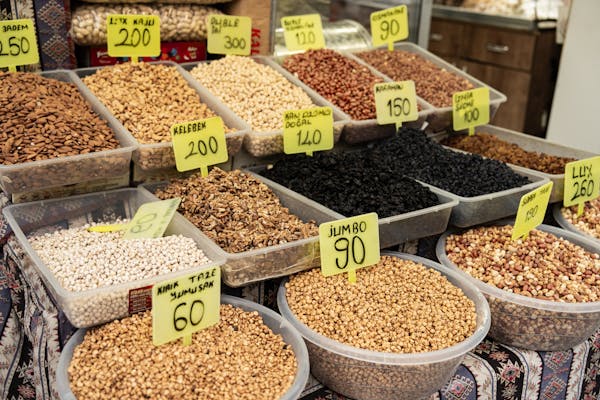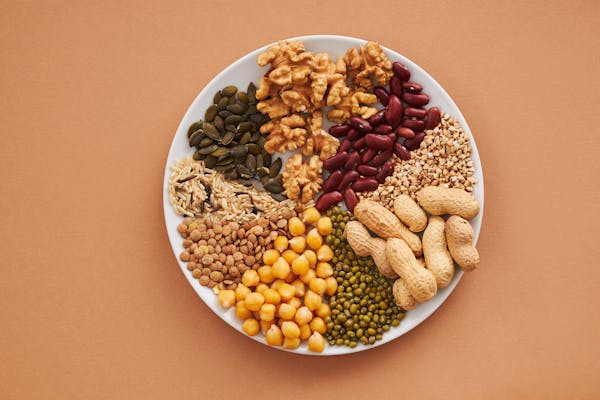Discover the Power of Alternative Protein Sources!
Jaqueline Palomares MSc, Nutrition
6/28/20248 min read


Importance of protein in the diet
Proteins are macromolecules formed by amino acid blocks that help maintain, develop, and grow our cells and tissues. Due to this, proteins are an essential nutrient for the human body.
We have different protein requirements throughout our lives to carry out various processes and maintain health. For example, adequate protein intake is essential during childhood and adolescence, as humans undergo rapid growth due to development. On the other hand, protein is also indispensable during pregnancy and lactation, as its demands are higher during these processes.
However, for the proper maintenance of nutritional status in adults, the Recommended Dietary Allowance (RDA) for protein is 0.8 grams per kilogram of body weight, or 0.36 grams per pound.
In this article, you will learn about alternative protein sources that exist to take care of your health while also protecting the environment.
Rising interest in alternative protein sources
In recent years, there has been a growing trend to find and develop alternative protein products, particularly those derived from plants.
Due to the high demand for meat, dairy, and eggs from livestock such as cows, pigs, and chickens. This issue leads to the emission of more greenhouse gases like methane, which is released by livestock. (1)
To understand this better, greenhouse gases like methane accumulate and prevent all the Earth's heat from escaping into space. This traps heat in the atmosphere, raising the planet's average temperature and causing global warming or extreme weather events, habitat loss, and species extinction, as we have experienced in recent years.
Therefore, finding protein alternatives that help improve and maintain our health while caring for the environment without compromising future generations is essential.
Understanding Alternative Protein Sources
Currently, there are different alternative proteins available for consumption in our diet. The most well-known are grains like quinoa and wheat and legumes like beans; however, there may be more examples within these groups that you need to be made aware of.
Additionally, the food industry seeks to use these ingredients to create new products similar to their animal-based counterparts, such as cheeses.
Plant-based proteins
This term refers to proteins of plant origin and can be found in various foods such as seeds, legumes, grains, etc. Likewise, there are products based on these ingredients, like pasta, bread, and protein drinks, which are being developed to offer a version with proteins that are not of animal origin. (2)
Lab-grown proteins
Lab-grown proteins, also known as in vitro or cultured meat, are a "meat" product produced using biotechnological techniques instead of being obtained directly from plants or animals. The production of this product can involve various processes, such as the fermentation of microorganisms like bacteria, fungi, or yeasts or the cultivation of animal cells in a controlled environment to produce animal proteins without the need to raise and slaughter animals. (3)
To understand this process more efficiently, imagine taking a biopsy from a living or recently slaughtered animal to extract its cells. These cells are then placed in an ideal environment with the necessary nutrients to multiply, resulting in a product that looks, smells, tastes, and feels like the meat we are used to consuming.
These are some of the protein alternatives available so far, which are being studied to achieve the same or better nutritional and technological results as their meat counterparts, with the advantage of caring for the environment.
Benefits of alternative protein sources
Environmental sustainability
Some benefits related to producing plant-based proteins include using fewer natural resources, such as water, than animal proteins. Additionally, fewer greenhouse gas emissions are generated, and less land is required to raise animals and grow crops to feed them.
Increased agriculture and livestock production have caused the loss of entire ecosystems worldwide.
The FAO (Food and Agriculture Organization of the United Nations) indicated that it takes 1,500 liters of water to produce a kilo of grains and 15,000 liters to produce a kilo of meat. That’s a lot of water and grain for minimal meat!
Health benefits
Health benefits include foods like legumes or beans, which provide fiber in addition to protein. It has been reported that the population does not consume the required amount of fiber to maintain a healthy gut biome, so doing so through legumes or whole grains is an excellent way to meet the requirements.
Similarly, consuming less red meat can reduce the risk of cardiovascular diseases by lowering the intake of fats that raise cholesterol levels.
Ethical considerations
Current ethical dilemmas include the exploitation of industrial farms and the slaughter and inhumane treatment of factory-raised animals. Alternative proteins offer a solution to this issue.
Exploring Plant-Based Proteins
Legumes
The most commonly consumed legumes worldwide are:
beans
chickpeas
lentils
peas
soybeans
This group of foods is being highly studied as an alternative because they improve soil fertility and contribute to climate change mitigation, as they do not rely on synthetic fertilizers.
Grains
Grains or cereals include:
corn
sorghum
millet
wheat
rice
barley
oats
teff
quinoa
Although the most common forms of consumption are in flours or products made from refined flour, it is recommended that at least half of all grains or cereals consumed be whole grains. Whole grains provide more fiber, which has various health benefits, especially for the heart and gut biome!
Nuts and seeds
Nuts are the fruit of a plant enclosed in a hard shell that must be opened to be consumed. Seeds, conversely, come from plants whose purpose is to grow into a new plant.
Nuts and seeds include:
almonds
chestnuts
sesame
cashews
pistachios
peanuts
pumpkin seeds
sunflower seeds
pecans
This group of foods also provides significant nutrients that complement our diet, including omega-3 fatty oils, which are great for heart, joint, and skin health!
Nutritional benefits and profiles
All the foods mentioned above are characterized by their outstanding nutritional content, including macronutrients like protein, fats, and carbohydrates, and micronutrients like vitamins and minerals. Additionally, these foods contain bioactive compounds with antioxidant and anti-inflammatory properties, among others. Their dietary fiber and resistant starch content helps reduce the risk of chronic degenerative diseases.
Protein content
Legumes provide the most protein, between 21% to 26%, followed by seeds and nuts, 14% to 20%, and grains, 9% to 14%.
As mentioned, proteins are composed of amino acids classified as essential and non-essential. Essential amino acids must be obtained through the diet, while non-essential amino acids are synthesized by the human body as a normal metabolic process of proteins. To have high-quality protein, you need to consume proteins with essential amino acids throughout the diet to obtain most of the benefits.
The essential amino acids complement each other by having a varied diet of vegetables, seeds, nuts, grains, and legumes, making food with better biological value protein. (4)
Vitamins and minerals
Legumes, grains, seeds, and nuts generally contain vitamins like the B-complex (folate, niacin, riboflavin, thiamine) and vitamins A, E, and K.
Legumes are known for their high iron content, which helps combat deficiencies of this mineral. They also contain minerals like magnesium, phosphorus, zinc, copper, and selenium, which contribute to maintaining nutritional health.
Dietary fiber
Legumes again provide the most fiber, with 8% to 27%, cereals around 7% to 15%, and seeds and nuts with 7% to 13%.
These foods' high dietary fiber content benefits health by helping maintain blood sugar levels, reducing cholesterol levels, and supporting the gut microbiome. This is an advantage compared to animal-based protein products, which do not provide any dietary fiber. (5)
Concerns and Misconceptions
Taste and texture considerations
Keep in mind that consuming plant-based or lab-grown protein products will not have the exact texture characteristics since, by nature, they cannot be identical. However, the food industry is constantly improving to make similar taste and texture changes.
Allergies and dietary restrictions
It is well known that nuts and some seeds, especially peanuts, almonds, and sesame, can cause allergic reactions. Additionally, wheat proteins (gluten) can cause allergic reactions among cereals or must be avoided by people with celiac disease.
It is important to consult a health professional to determine if you have any reactions to these foods. It is also essential to be aware of cross-contamination, especially in childhood, when children are more likely to have allergic reactions than adults. (6)
Pricing and accessibility
Generally, legumes and grains are more affordable than meat products and are easier to obtain. Seeds or nuts can be more expensive, but their consumption is lower compared to legumes or cereals, so although they may seem expensive, the actual intake is smaller, making them suitable as snacks. All these products can be found in supermarkets as well as farmers' markets.
If you buy in bulk, wash the legumes well to remove dirt, such as stones or other unsafe items.


Bottom Line
Benefits of alternative protein sources
Higher dietary fiber content
Vitamins and mineral content
Variety in the diet, complementing essential amino acids
Reduced environmental pollution
Sustainable diet
Less exploitation of industrial farms and inhumane animal slaughter
Economically, legumes and grains are cheaper than animal-based products
Explore and incorporate sustainable protein options into their diets
Exploring alternative proteins can bring significant benefits to health and the environment. Doing this, you help future generations have a quality life without exploiting Earth's resources and contribute to its care.
At the same time, you take care of your nutritional health and maintain your well-being while enjoying a new lifestyle—a win-win for all, including the planet!






Incorporating Alternative Proteins into Your Diet
Tips for transitioning to alternative protein sources
Switching from a carnivorous diet to one based on plant proteins can be difficult initially. Here are some tips to make the change easier:
Start gradually by substituting small amounts of grains or legumes into your dishes and using meat substitutes like tofu instead of meat products.
Explore new recipes from nutritionists on social media to inspire you visually to try them out at home!
It is also essential to consult a nutritionist before making this change to ensure you are getting the proper nutrients.
Overcoming common misconceptions and barriers
Seek information from reliable sources, such as a nutritionist or dietician. Some untrained individuals may think they’re helping but lack professional grounding, which can be misleading.
For example, they might tell you that eating only plant-based proteins could cause weight gain due to the carbohydrate content. This is incorrect, as a balanced, varied, and adequate diet has benefits too.






© 2025 Salo Content Writing LLC, all rights reserved
Join the Movement for a Healthier Planet! 🌿
Subscribe now and get your FREE Sustainable Living Checklist! Plus, enjoy weekly articles and delicious plant-based recipes straight to your inbox. Let’s make sustainable living simple and inspiring, one email at a time! 💚✨
